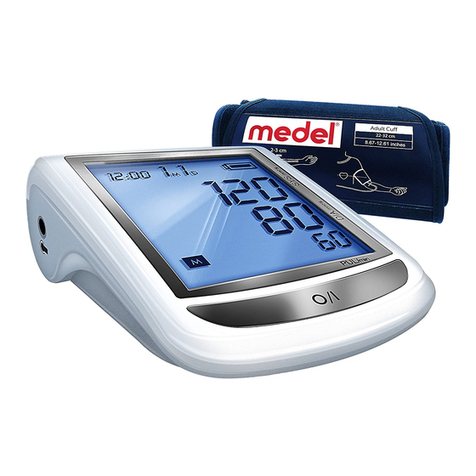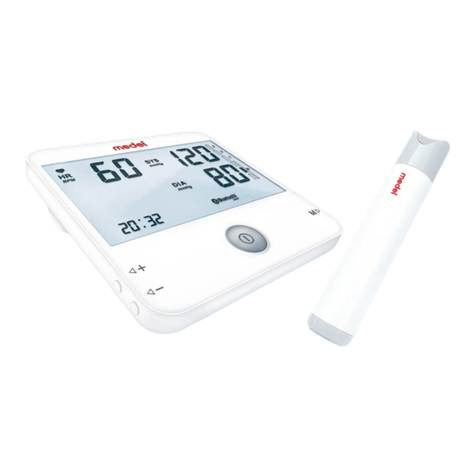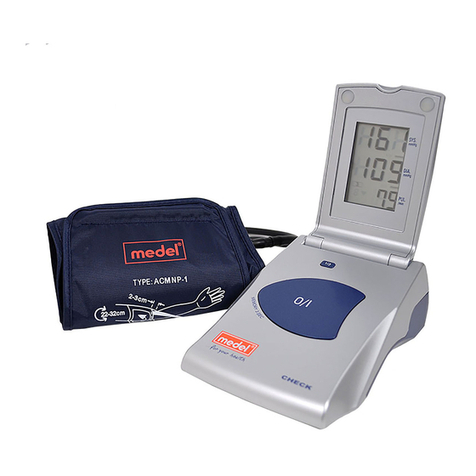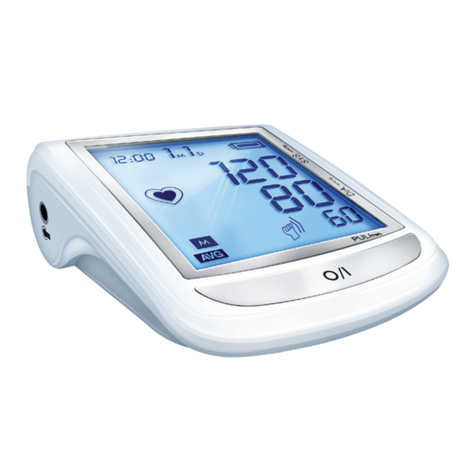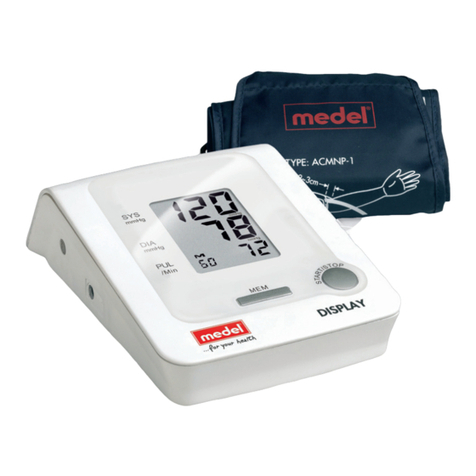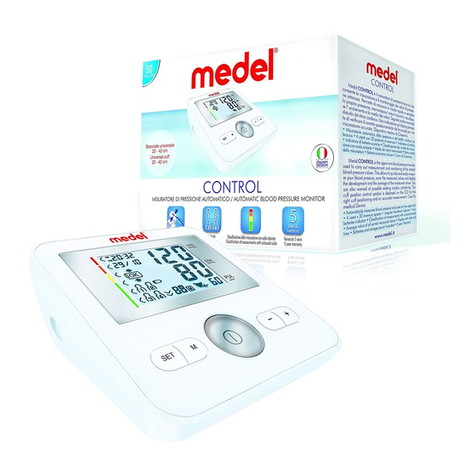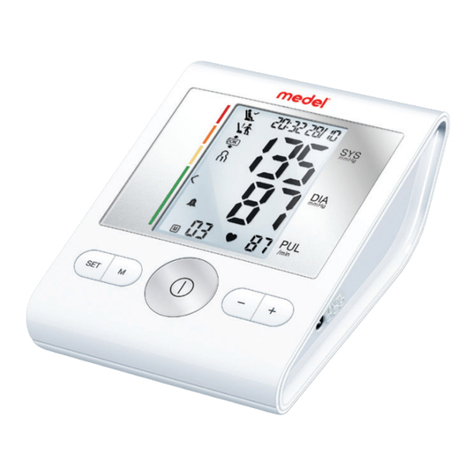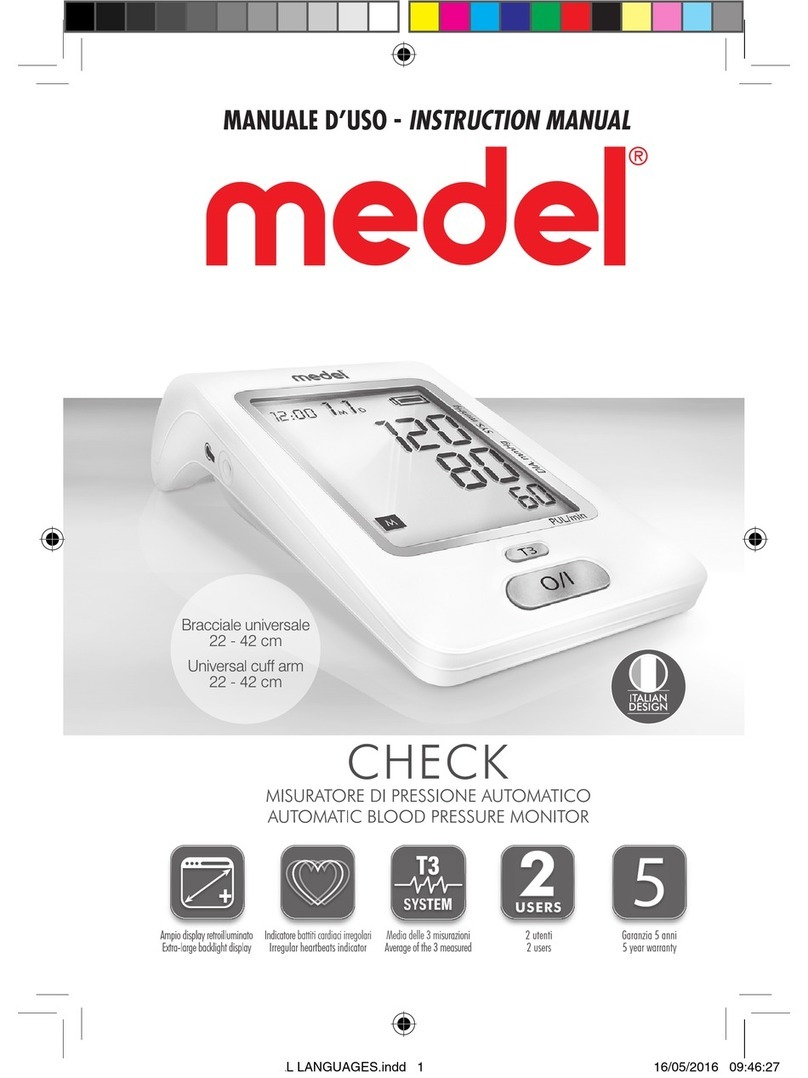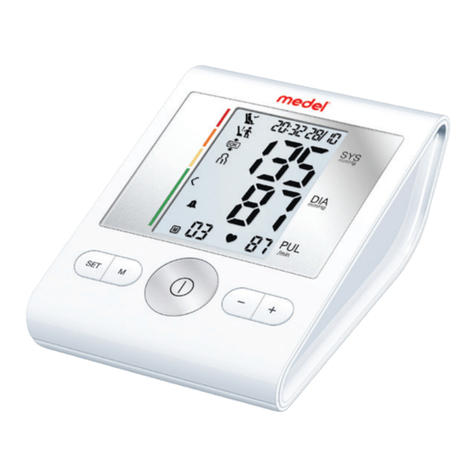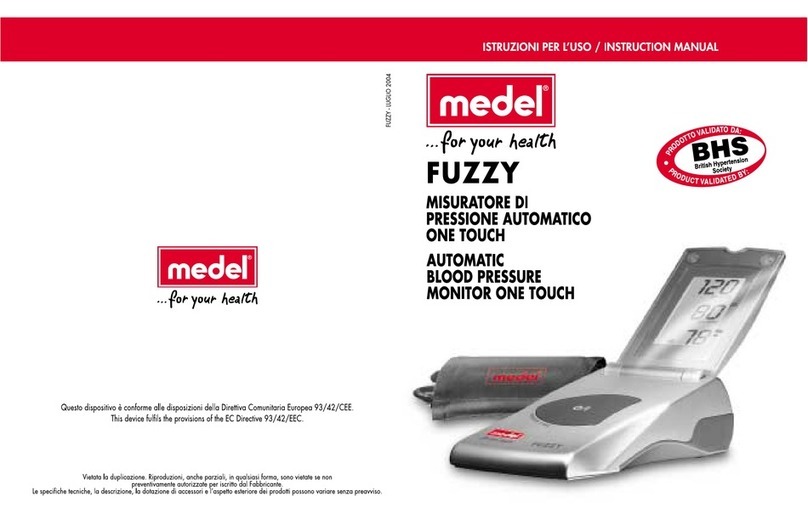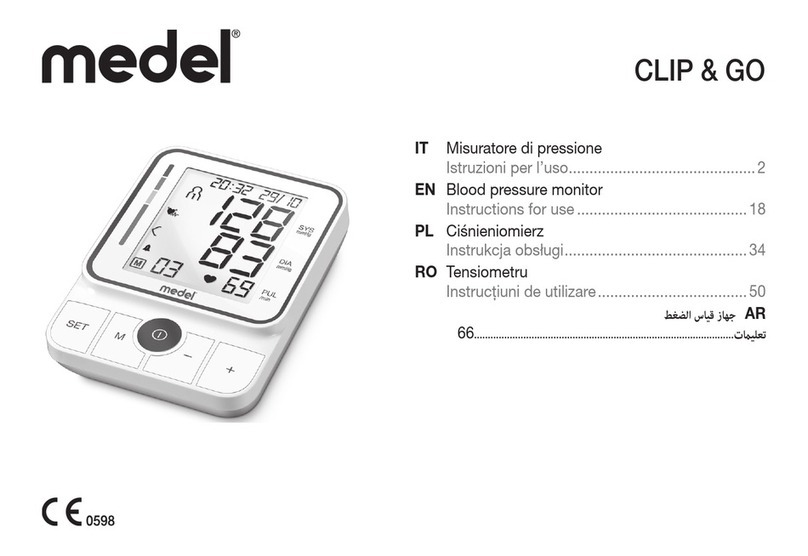
Cu Cu
SÍMBOLOS SIMBOLURI
SYMBOLE ΣΥΜΒΟΛΑ
Dados anteriormente medidos na memória. Date măsurători anterioare, memorate.
Media ultimelor 3 măsurători.
Tensiune arterială sistolică în mm Hg.
Tensiune arterială diastolică în mm Hg.
Număr bătăi pe minut.
Baterie descărcată.
Măsurătoare în curs.
Indicator de aritmie cardiacă (I.H.B.)
Eroare în timpul măsurătorii.
Priză tub manşetă
Umare
Dezumare
Dane wcześniejszych pomiarów zapisane w pamięci. Δεδομένα προηγούμενων μετρήσεων στη μνήμη.
Średnia wartość z 3 ostatnich pomiarów. Μέσος όρος 3 τελευταίων μετρήσεων.
Ciśnienie krwi skurczowe w mmHg. Συστολική πίεση του αίματος σε mm Hg.
Ciśnienie krwi rozkurczowe w mmHg. Διαστολική πίεση του αίματος σε mm Hg.
Uderzenia na minutę. Παλμοί το λεπτό.
Wyczerpane baterie. Μπαταρία αποφορτισμένη.
Pomiar w toku. Μέτρηση σε εξέλιξη.
Wskaźnik nieregularnego tętna (I.H.B.). Δείκτης ακανόνιστων καρδιακών παλμών (I.H.B.)
Błąd w trakcie pomiaru. Σφάλμα κατά τη διάρκεια της μέτρησης.
Wtyczka powietrza mankietu. Υποδοχή σωλήνα περιβραχιόνιου
Nadmuchiwanie powietrza Φούσκωμα
Spuszczanie powietrza Ξεφούσκωμα
Média das últimas 3medições.
Pressão sanguínea sistólica em mm Hg.
Pressão sanguínea diastólica em mm Hg.
Batimentos por minutos.
Bateria descarregada.
Medições em curso.
Indicador de batimento cardíaco irregular (I.H.B.)
Erro durante a medição.
Tomada tubo da braçadeira
Inar
Desinar PT RO
PL EL
100042_MEDEL CHECK USER MANUAL_ ALL LANGUAGES.indd 6-7 28/06/2017 10:31:08
